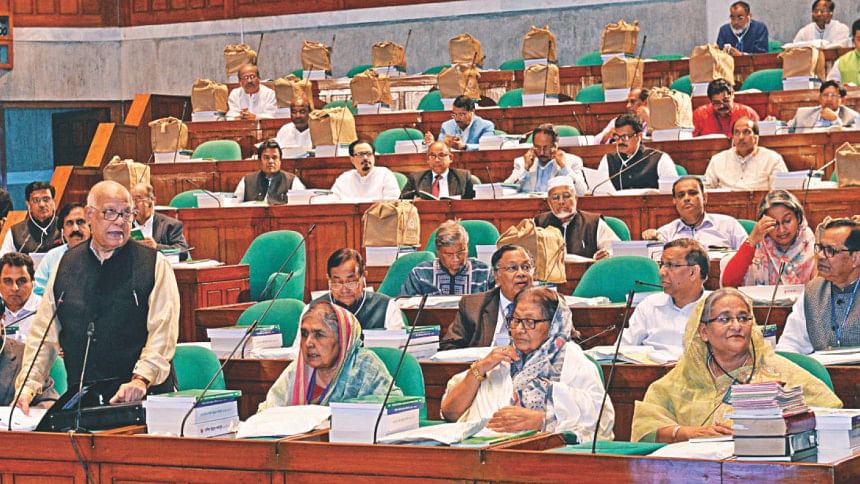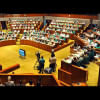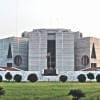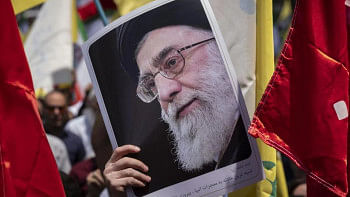Creating fiscal space to finance development

Bangladesh should be justifiably proud of its development achievements and this progress accelerated over the past decade. Bangladesh crossed the World Bank defined lower middle-income country threshold in 2015 and now aspires to achieve upper middle-income country status by 2031 and higher-income country status by 2041. These are undoubtedly ambitious targets that reflect the prevailing economic optimism in the country.
Achieving these goals will require major improvements in policies, institutions and resources. The resource mobilisation challenge for the public sector is in particular daunting. Total public expenditure as a percentage of the GDP is around 16 percent, which is low for a country with 160 million people. While the efficiency in public spending is also low, and the government should improve this, total public spending must increase to help finance long-term development.
Tight fiscal space is a major development constraint. The tax to the GDP ratio in Bangladesh is very low. It was 7.9 percent in FY2009 and increased modestly to 9.1 percent in FY2017. The non-tax revenue to the GDP ratio is not only low, it has fallen as a percentage of the GDP from 1.9 percent in FY2009 to 1.2 percent in FY2017. So, total revenues have grown from 9.8 percent of the GDP in FY2009 to 10.3 percent over the past 8 years. Shortfalls in tax revenue collections in FY2018 suggest that this performance is not likely to have improved much and total revenue is projected to grow marginally to 10.5 percent of the GDP in FY2018. So, total revenues would have grown by a mere 0.7 percent of the GDP over a 9-year period, which suggests an average increase of less than 0.1 percent of the GDP per year. This lacklustre revenue performance is explained by the absence of any major fiscal reform in this period.
In the absence of major tax and non-tax revenue reforms in the coming FY2019 budget, we should realistically expect the tax to the GDP ratio to increase by a maximum of 0.2 percent of the GDP at around the trend rate, reaching 9.5 percent of the GDP, and total revenues to increase to around 10.7 percent of the GDP. With a prudent cap on budget deficit to around 5 percent of the GDP, the maximum public expenditure that will be feasible is projected at 15.7 percent of the GDP in FY2019. This low public spending leaves very little fiscal space to do anything meaningful to meet the deficits in spending on infrastructure, health and education, and social protection.
The Seventh Five Year Plan (7FYP) understood the severity of the prevailing fiscal constraint in Bangladesh and built in a strong public resource mobilisation programme. The fiscal strategy in the 7FYP aimed at increasing total public spending by 5.3 percent of the GDP to 21.1 percent of the GDP by FY2020. This increase in public spending was deemed necessary to finance the growth and poverty reduction strategies of the 7FYP.
The underlying revenue mobilisation strategy was: first, to raise the tax to the GDP ratio by 4.8 percent of the GDP; and second, to increase non-tax revenue by 0.5 percent of the GDP. So, total revenue was projected to grow by 5.3 percent of the GDP over a five-year period based on the implementation of a strong fiscal reform programme that would create the fiscal space to absorb the projected increase in public spending without increasing the fiscal deficit.
The implementation record for the first three years of the 7FYP shows a huge shortfall in performance for both tax and non-tax revenues. The tax to the GDP ratio increased by 0.5 percent of the GDP while non-tax revenue has remained unchanged at 1.2 percent of the GDP. The shortfall in revenue performance over the 7FYP target is as much as 3 percent of the GDP in the first three years. It is most unlikely that this huge shortfall can be met in the remaining two fiscal years of 7FYP. Yet, it is never too late to set the stage for a recovery over the next five years.
The Way Forward: The fiscal strategy proposed in the 7FYP is sound and remains valid. The challenge is that it needs to be implemented. Actions will be needed on both the tax and non-tax front. The strategy to increase taxes by 4.8 percent of the GDP over a five-year period is ambitious but necessary and doable. Political will is necessary.
The main elements of the tax strategy are as follows.
1. Implement the VAT 2012 Law
2. Overhaul the corporate tax regime by lowering corporate rates to a maximum of 25 percent over a three-year period with few exceptions. Eliminate most tax exemptions. Bring all sectors to the same corporate taxation regime including the readymade garments (RMG) sector.
3. Vastly simplify the personal income tax regime by eliminating wealth and income-expenditure statements, which is an important source of corruption; ensure electronic filing and payments; remove all direct interface between taxpayer and tax collector. This will improve voluntary compliance and expand the tax base even to the rural areas where digital technology is making progress.
4. Overhaul the audit system. This should be very selective and productive in terms of revenue yield. This should be a computer-based system that identifies audit candidates using a scoring method based on pre-determined red flags. Generally, these red flags should be designed to be revenue productive and target genuine tax evaders. Audits should not be targeted to harass political opponents or for corrupt practices.
5. Eliminate the wealth tax and introduce a proper property tax system based on a realistic valuation of personal and commercial properties and a meaningful tax rate.
6. Sharply reduce the incidence of trade taxation by overhauling the supplementary duty and regulatory duty system. The negative revenue impact can be neutralised through streamlining the highly differential rates of import duties and through the VAT system that will apply to both imports and domestic goods.
7. Introduce a carbon tax on fossil fuel use. The revenue impact can be substantial while reducing carbon emission and promoting the use of clean energy. To minimise the adverse effects on cost, it can be done in steps starting first with petrol and diesel and then moving to other fuels. China and India have introduced a carbon tax in recent years with considerable success.
8. Improve tobacco taxation by increasing the tax rates on low-end cigarettes and biris and by bringing all biri production in the tax net.
9. Strengthen the research and administrative capacities of the NBR through international technical assistance and partnership with local research institutions. To facilitate research and planning, all tax data should be computerised. Online filing will facilitate this.
While the bulk of the new fiscal space will come from taxation, which is woefully low as a share of the GDP, some important contribution can be secured from non-tax sources as envisaged in the 7FYP. If well implemented, total non-tax revenues can rise to 2 percent of the GDP in the next five years.
The largest gain can be made through better use of assets invested by the government in state-owned commercial banks (SCBs) and state-owned enterprises (SOEs). Presently both are on an average running on losses and depend on budget transfers for survival. Additionally, the stock of outstanding non-performing loans (NPLs) of SCBs (estimated at $5 billion in FY2017) and outstanding debt of SOEs (including utilities and authorities) (estimated at $24.5 billion in FY2017) present a huge contingent liability for the government that must be systematically addressed.
A reform of SCBs and SOEs is of the highest priority to ensure sound budget management over the medium term. The government must adopt a policy whereby the SCBs and SOEs are both required to earn a profit based on a reasonable rate of return on invested assets.
This should be most easy for SCBs, because by construction banking is a profitable business where banks enjoy an average spread of 4.5 percent over deposits. Efficient banks should typically limit their administrative cost to about 1.5-2 percent of the spread, leaving the rest for profit. A loss happens only when bad loans are made and when collection of interest and principal repayments are not enforced. Both these bad choices are mostly politically motivated and can be corrected if there is a political will.
The SOEs present a more complex challenge and may require some technical restructuring and better pricing policies. But these can be addressed over the medium term.
Most importantly, both SCBs and SOEs must be delinked from the national budget through a hard budget constraint. In the face of severe fiscal constraint amidst the need to finance essential development spending, continued injection of budget resources to salvage inherently profitable public assets that are being damaged by bad management and political interventions is a poor and unsustainable fiscal strategy and must be stopped and reversed quickly.
The writer is vice-chairman of the Policy Research Institute. He can be reached at [email protected].

 For all latest news, follow The Daily Star's Google News channel.
For all latest news, follow The Daily Star's Google News channel. 








Comments